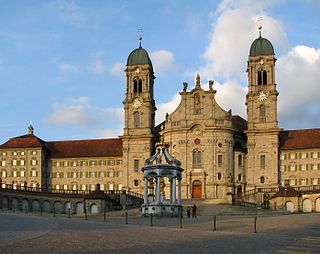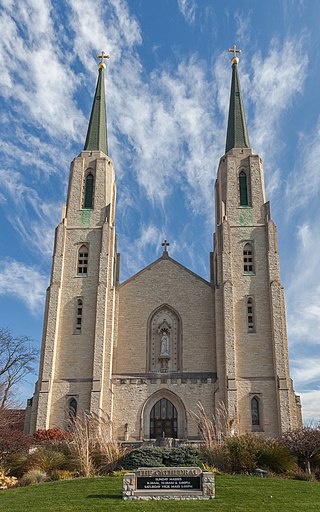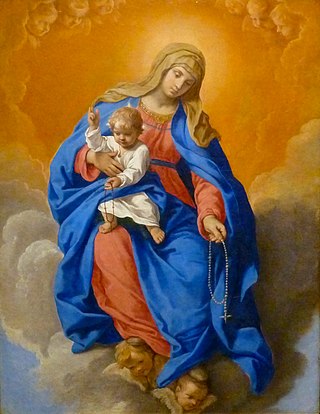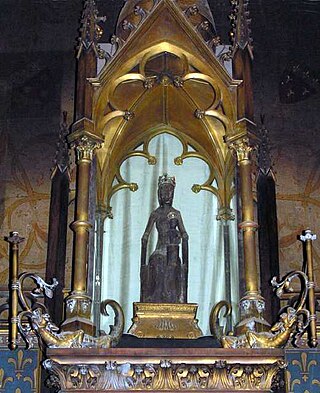![Icon of Saint Amadour in the Crypt Saint-Amadour [fr] Saint Amadour.jpg](http://upload.wikimedia.org/wikipedia/commons/thumb/2/20/Saint_Amadour.jpg/220px-Saint_Amadour.jpg)
Amadour is the legendary founder of the shrine of Our Lady of Rocamadour in France. He is believed to have been a hermit. His feast day is 20 August.
![Icon of Saint Amadour in the Crypt Saint-Amadour [fr] Saint Amadour.jpg](http://upload.wikimedia.org/wikipedia/commons/thumb/2/20/Saint_Amadour.jpg/220px-Saint_Amadour.jpg)
Amadour is the legendary founder of the shrine of Our Lady of Rocamadour in France. He is believed to have been a hermit. His feast day is 20 August.
In 1166, an ancient tomb containing an unidentified body was found at Rocamadour near the entrance to the Notre-Dame chapel. Popular piety gave him the name of Amator, “lover”, “friend” of God, typical of courtly literature of the time. [1] The legend of Amadour began to develop about this time.
He was identified with Zaccheus of the Gospel, and husband of St. Veronica. Driven forth from Palestine by persecution, Amadour and Veronica embarked in a frail skiff and, guided by an angel, landed on the coast of Aquitaine, where they met Bishop St. Martial, who was preaching the Gospel in the southwest of Gaul. After journeying to Rome, where he witnessed the martyrdoms of Sts. Peter and Paul. Amadour, having returned to France, on the death of his spouse, withdrew to a wild spot where he built a chapel in honour of the Blessed Virgin, near which he died a little later. [2]
Like similar legends, this account does not appear till long after the age in which the chief actors are deemed to have lived. The name of Amadour occurs in no document previous to the compilation of his Acts, which cannot be judged older than the twelfth century. The mention of the third century St. Martial in a first century tale would tend to prove the "Acts of St. Amadour" a forgery. [2]
It is considered probable that the story of Amadour is completely unfounded, and that he himself may be a wholly imaginary person. There is no factual foundation for identifying him with Saint Amator, a bishop of Auxerre. [2]
The Shrine of Our Lady of Rocamadour is under the auspices of the Diocese of Cahors which holds that the remains could be those of one of the hermits established in the Alzou canyon from the 7th century, and whose cave could have been the first chapel of the site. [1]
Since 2016, which marked the 850th anniversary of the discovery of the body of Saint Amadour, the relics are exhibited in a reliquary in the basilica. [1]

The term Black Madonna or Black Virgin tends to refer to statues or paintings in Western Christendom of the Blessed Virgin Mary and the Infant Jesus, where both figures are depicted with dark skin. Examples of the Black Madonna can be found both in Catholic and Orthodox countries.

Martial, called "the Apostle of the Gauls" or "the Apostle of Aquitaine", was the first bishop of Limoges. His feast day is 30 June.

Fermin was a legendary holy man and martyr, traditionally venerated as the co-patron saint of Navarre, Spain. His death may be associated with either the Decian persecution (250) or Diocletianic Persecution (303).

Einsiedeln Abbey is a Catholic monastery administered by the Benedictine Order in the village of Einsiedeln, Switzerland. The abbey is dedicated to Our Lady of the Hermits, in recognition of Meinrad of Einsiedeln, a hermit Catholic saint. The monastery is not under the jurisdiction of a diocese or a bishop because it is a territorial abbey.

Leonard of Noblac, is a Frankish saint closely associated with the town and abbey of Saint-Léonard-de-Noblat, in Haute-Vienne, in the Limousin region of France. He was converted to Christianity along with the king, at Christmas 496. Leonard became a hermit in the forest of Limousin, where he gathered a number of followers. Leonard or Lienard became one of the most venerated saints of the late Middle Ages. His intercession was credited with miracles for the release of prisoners, women in labour and the diseases of cattle.

Rocamadour is a commune in the Lot department in southwestern France. It lies in the former province of Quercy.

The Diocese of Fort Wayne–South Bend is a Latin Church ecclesiastical territory, or diocese, of the Catholic Church in north-central and northeastern Indiana in the United States.
Meinrad, OSB was a German Benedictine hermit and is revered as a Catholic and Orthodox saint. He is known as the "Martyr of Hospitality". His feast day is 21 January.

Our Lady of the Rosary, also known as Our Lady of the Holy Rosary, is a Marian title.

The Diocese of Tulle is a Latin Church diocese of the Catholic Church in Tulle, France. The diocese of Tulle comprises the whole département of Corrèze.

Amator(in French)Amadour or Amatre was bishop of Auxerre from 388 until his death on 1 May 418 and venerated as a saint in the Catholic Church. Amator's feast day is celebrated on 1 May.

Saint Julian of Le Mans is a saint venerated in both the Roman Catholic and Orthodox Church, honored as the first bishop of Le Mans. His feast day is 27 January. The translation of his relics is celebrated on 25 July.
Saint Ternan is venerated as the "Bishop of the Picts". Not much is known of his life. Different historians place him either at the mid-fifth century or the latter part of the sixth. Those who place him in the earlier period, associate him with Palladius.

Évreux Cathedral, otherwise the Cathedral of Our Lady of Évreux, is a Catholic church located in Évreux, Normandy, France. The cathedral is a national monument and is the seat of the Bishop of Évreux.

Our Lady of Laus or Refuge of Sinners denotes Marian apparitions that took place between 1664 and 1718 in Saint-Étienne-le-Laus, France, to Benoîte Rencurel, a young shepherdess. The apparitions were approved by the Holy See on 5 May 2008. Pope Pius IX granted a Canonical Coronation to her marble image on 23 May 1855.
Our Lady of Grace is a Title of Mary. The feast day associated with this title is February 7. The title of Our Lady of Grace is venerated in many countries throughout the world under various aspects. Many parishes, churches, and schools bear this name.

Adrien-Hippolyte Languillat SJ (1808–1878) was a French Jesuit and missionary in China. He was titular bishop of Sergiopolis (1856–1878) and vicar apostolic of Southeastern Chi-Li (1856–1864) and Kiangnan (1864–1878).

The Basilica of Notre Dame of Geneva is a Roman Catholic church and Minor Basilica located in Geneva, Switzerland. It is dedicated to the Blessed Virgin Mary.

Litanies à la Vierge noire, FP 82, is a piece of sacred music composed by Francis Poulenc in 1936 for a three-part choir of women and organ, setting a French litany recited at the pilgrimage site Rocamadour which the composer visited. The subtitle, Notre-Dame de Rocamadour, refers to the venerated black sculpture of Mary. The composition is Poulenc's first piece of sacred music. In 1947 he wrote a version for voices accompanied by string orchestra and timpani.
![]() This article incorporates text from a publication now in the public domain : Herbermann, Charles, ed. (1913). "Rocamadour". Catholic Encyclopedia . New York: Robert Appleton Company.
This article incorporates text from a publication now in the public domain : Herbermann, Charles, ed. (1913). "Rocamadour". Catholic Encyclopedia . New York: Robert Appleton Company.